SUMMARY
This is AI generated summarization, which may have errors. For context, always refer to the full article.
![[OPINION] Is PBBM’s ‘functional governance’ enough to quench the fire of job losses?](https://www.rappler.com/tachyon/2022/10/bbm-covid-unemployment.jpg)
The COVID-19 pandemic may be winding down but the economic crisis is getting worse still. Mass layoffs of workers are on the rise, affecting thousands of workers. Is there any response by the administration of President Bongbong Marcos (PBBM) to this problem?
Almost a month ago, the biggest employer in the Mactan Economic Zone in Cebu retrenched more than 4,000 workers or one-fourth of its workforce. The giant Sports City group of companies cited numerous reasons for terminating its employees — from the effects of Typhoon Odette to the war in Ukraine that led to increased operating costs and decreased orders from its clients, which includes global garment brands Adidas, Under Armour, New Balance, Lululemon, and Saucony.
The job losses at Sports City are arguably the largest for the year but is not the first and probably not the last. Almost at the same time at the layoffs in the Mactan ecozone, the popular online platform Shopee announced terminations among its Philippine labor force due to losses of its Singaporean parent company. Earlier in September, Coca-Cola Philippines temporarily closed several of its bottling plants due to a shortage of sugar. While the company has not issued a categorical statement about the factory shutdowns, several news outlets reported that its Bohol and Iloilo plants shuttered in the meantime.
As if to confirm the concern of the labor group Partido Manggagawa (PM) that the mass layoffs at Sports City was a “portent of worse things to come,” the industry group Confederation of Wearable Exporters of the Philippines (CONWEP) stated this month that some 9,440 workers from among its member companies have either been terminated or furloughed due to a slump in orders. Further, CONWEP forecasted that the market downturn may affect 27,000 workers or 10% of the total labor force in garments, textiles, shoes, and bags manufacturing.
A week after the Sports City retrenchments were announced, the Department of Social Work and Development distributed a little more than P18 million worth of assistance to the displaced workers in the form of cash and food packs. This was after the Lapu-Lapu City local government asked the national government for assistance for the Sports City workers. The release of immediate aid is to be welcomed. Still, such assistance is a mere band-aid response to a structural problem.
Imperative for robust social protection
The economic crisis, the COVID-19 pandemic, and climate change are all covariate shocks that overwhelm whole communities and upset the livelihood of households. Of course, individual households have differing levels of resilience to shocks. Flooding due to strong typhoons impacts everyone in affected communities. But the rich can stay temporarily in posh hotels while the poor have to relocate to basketball courts and public schools. Thus, the most vulnerable populations need social protection to weather the impacts of covariate shocks.
Recognizing this, the labor coalition Nagkaisa demanded the institution of an employment guarantee and wage subsidies. The call for employment and wage guarantees were part of COVID-19 recovery proposals that Nagkaisa issued in late 2020. Nagkaisa noted the massive rise in unemployment and underemployment in the wake of the lockdowns imposed to contain the pandemic. The employment and wage guarantees addressed the need to create decent jobs that can sustain the families of formal and informal workers.
Specifically, Nagkaisa demanded wage subsidies equivalent to 75% of the prevailing minimum wage to save jobs in micro, medium, and small enterprises (MSMEs). Wage subsidies are meant to prevent MSMEs from shedding their employees and protect the purchasing power of workers which enables the economy to float instead of sink. Employment guarantees target the unemployed for engagement in public sector jobs, including climate jobs or work to mitigate and adapt to climate change, ranging from 100 days to 9 months. Finally, workers must be retrained for new employment and receive stipends not less than 50% of the minimum wage.
The labor coalition engaged the government in dialogues with the Department of Labor and Employment (DOLE) and Department of Finance (DoF). Nagkaisa’s demand for income and job guarantees as a response to unemployment and underemployment converged with the DOLE’s study for a Social Protection Floor (SPF). The 2021 SPF proposals of the DOLE included a subsidized unemployment insurance for informal workers and a guaranteed employment scheme targeting the unemployed.
The SPF proposals envisioned several scenarios of varying levels of coverage and levels of benefits. Thus, subsidizing 30% of the unemployment insurance premiums of 25% of vulnerable informal workers in 2023 will cost P11.9 billion. Increasing the coverage to 100% of the vulnerable informal workforce in 2026 meant a government outlay of P47.8 billion. Raising the subsidy to 50% of the premium escalates the costs to P19.8 billion for covering 25% of informal workers and P79.5 billion for extending it to 100% coverage.
Meanwhile, 60 days of guaranteed employment for half a million people in 2023 will cost P23.1 billion and a 100-day scheme raises the budget need to P38.1 billion. If 2.1 million unemployed are targeted for guaranteed employment, the corresponding costs are P123.1 billion and P204.6 billion respectively for 60 days and 100 days.
In comparison, the Social Security System spent P2.6 billion in unemployment benefits for some 200,000 eligible workers who lost their jobs from August 2019 to June 2021, which covers a significant part of the pandemic period. During the pandemic, the government as a whole gave out P12 billion in cash assistance to some two million formal, informal, and migrant workers.
A functional response to the fire of job losses
The latest Labor Force Survey reveals that there are 2.68 million unemployed as of August this year. This was already a huge improvement over the 3.88 million unemployed in August 2021. And yet, 79,000 workers were added to the army of unemployed from July 2022. The results of the labor force surveys for September and October bears watching in the light of the mass layoffs in Sports City, Shopee, and other firms.
The SPF proposals remain just that for now. Obviously, the huge budgetary outlay needed for robust social protection imposes constraints on its immediate implementation. Yet, income and job guarantees may be expensive but can be funded by a wealth tax. Nagkaisa first raised the call for a wealth tax in late 2020. According to the group, a modest wealth tax can generate P300 billion in a year. This alone can finance the SPF proposals. As expected, in Nagkaisa’s discussions with the DOLE and DoF in 2021, the latter disagreed with the wealth tax. Yet today, there are already legislative proposals for a wealth tax and various groups are advocating for it.
The rationale for income and job guarantees has already been established. It is based on the recognition of the right to a basic minimum living standard and for transitioning workers to decent jobs. The layoffs transpiring at manufacturing to services firms uncover its urgency. All that is needed now is political will. More than a hundred days into his term, job losses are rising while real wages are falling. Can PBBM’s “functional governance” put out the fire of mass layoffs before it becomes a conflagration? – Rappler.com
Benjamin Velasco is Assistant Professor, UP Diliman School of Labor and Industrial Relations (SOLAIR) and Co-Convenor, Program on Alternative Development, UP Center for Integrative and Development Studies (UP CIDS AltDev). Opinions expressed here are of the author alone and do not reflect those of his affiliations.
3 comments
How does this make you feel?
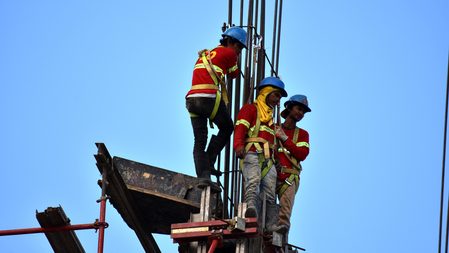
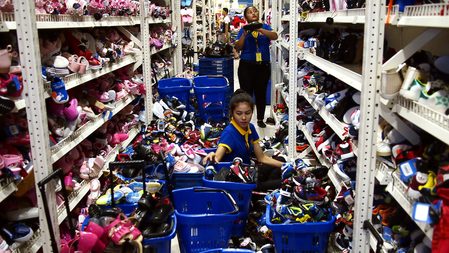
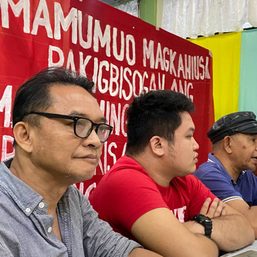
![[OPINION] In a changing climate, how do we ensure safety and health at work?](https://www.rappler.com/tachyon/2024/04/Climate-change-safety-workers-April-25-2024.jpg?resize=257%2C257&crop_strategy=attention)
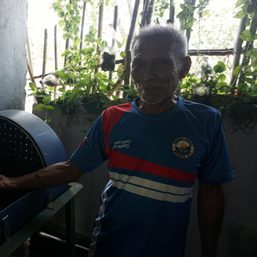
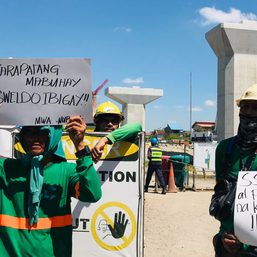

Wealth tax? The probability that the wealthy fund campaign donors of President Marcos Jr. will agree to this is, unfortunately, ZERO. So, the best thing to do is forget it.
Thanks to the thought-provoking, realistic and practical
recommendation from Prof. Benjamin Velasco in this article of his.
Indeed, PBBM’s “functional governance” and political will are needed to address
the problem of job losses. But there are two problems regarding this.
The first problem is: is his “governance”
is really “functional”? especially when dealing with this issue?
The second problem is that even though he will later impose his political will –
it will MORE LIKELY benefit ONLY or MOSTLY the companies of those who donated to his campaign
funds in this year’s Presidential election.
Correction: “… is his ‘governance’ really ‘functional’? (please omit the second “is).